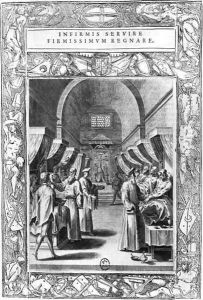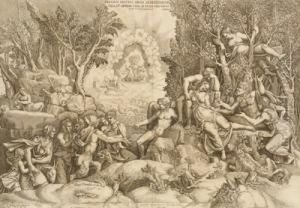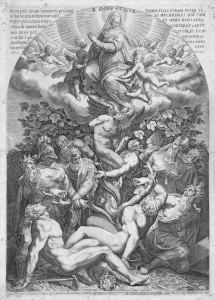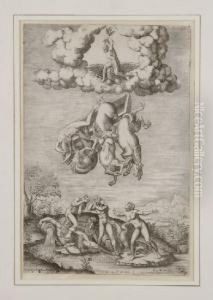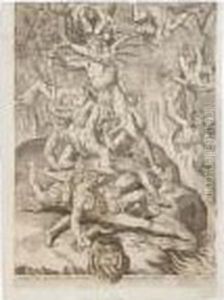Philippe Thomassin Paintings
Philippe Thomassin was an eminent French engraver, born in Troyes, Champagne, in 1562. His work and career spanned the late Renaissance and early Baroque periods, a time when the art of engraving was undergoing significant developments and was increasingly used to disseminate artworks to a broader audience. Thomassin's contributions to the field of engraving were substantial, and he is remembered for his skillful reproductions of paintings and his original compositions, which were characterized by meticulous detail and a deep understanding of the visual narratives he sought to convey. Thomassin's journey into the world of art took him to Rome, a pivotal move that greatly influenced his career and artistic output. In Rome, he was exposed to the works of the Italian masters and the vibrant artistic scene of the late 16th and early 17th centuries. This exposure is evident in his engravings, which often reflected the themes and styles of the Italian Renaissance and Baroque periods. He was particularly known for his series of engravings after Raphael's frescoes, showcasing his ability to capture the essence of the original works while adding his own interpretative touch. Thomassin's time in Italy not only honed his skills as an engraver but also immersed him in a cultural exchange that enriched his artistic vision. Throughout his career, Philippe Thomassin was acclaimed for his versatility and the high quality of his engravings. He worked on religious subjects, portraits, and historical scenes, demonstrating a remarkable ability to adapt his style to suit different themes and compositions. His works were sought after by collectors and art enthusiasts of his time, contributing to the spread of the Italian Renaissance and Baroque styles across Europe. Despite his significant achievements, detailed records of his life are somewhat scarce, and much of what is known about him comes from the analysis of his surviving works and contemporary accounts. Philippe Thomassin passed away in Rome in 1622, leaving behind a legacy that has influenced the art of engraving. His work remains a testament to the skill and creativity of engravers during the transition from the Renaissance to the Baroque period, and his engravings continue to be studied and appreciated for their artistic merit and historical significance. Thomassin's life and work exemplify the role of engravers in the cultural exchanges of early modern Europe, and his legacy underscores the importance of this medium in the history of art.
